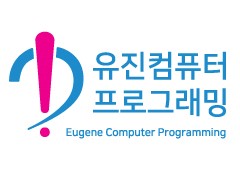Operating System Objectives And Function
An Operating System is a program that controls the execution of application programs and acts as an interface between the user of a computer and the computer hardware. It can be thought of as having three objectives: Convenience, Efficiency, Ability to evolve
• User/Computer Interface
• Resource Manager
• Ease of Evolution of an Operating System
CPU, Memory등 컴퓨터의 자원을 효율적 관리하여, 각 프로세스가 사용할 수 있도록 배분한다.
프로세스란, 파일 형태의 프로그램이 실행되어, 메모리에 적재된 상태를 의미
컴퓨터의 자원 → CPU, Memory등
예)Unix, Linux, MacOS, MS Windows, etc.
과거 운영체제는 uni-tasking 곧, 하나의 프로세스만을 처리 할 수 있었으나 – 예: DOS, Apple의 Basic – 현재의 운영체제는 multi-tasking이 가능.
multi-tasking의 예 : MS Windows에서 음악을 들으며, 웹 서핑 하기.
The Evolution Of Operating System
• Serial Processing(직렬처리)
→ No Operating System. The programmer interacted directly with the computer hardware.(프로그래머가 바로 컴퓨터 하드웨어와 상호작용)
• Simple Batch System(단순 일괄처리 시스템)
→ The user submits the job on cards or tape to a computer operator, who batches the jobs together sequentially and places the entire batch on an input device for use by the monitor software.
(사용자가 일을 카드나 테이프를 통해 컴퓨터 작동자에 제출, 작동자능 순차적으로 그일들을 일괄처리하고 그 전체 일괄처리를 감시 소프트웨어가 사용하기 위해 입력 장치에 놓는다)
• Multi-programmed Batch Systems(다수 프로그램된 일괄처리 시스템)
→ When one job needs to wait for I/O, the processor can switch to the other job, which most likely is not waiting for I/O.
(한 일이 입출력 창치를 기다릴 필요가 있을 때, 처리장치는 다른 일로 전환 시킬수 있다, 그리고 그것은 입출력을 기다리지 않는 일일 경우가 가장 많다)
• Time-Sharing System(시간 공유 시스템)
→ The processor’s time is shared among multiple users. Multiple users simultaneously access the system through terminals.
(처리장치의 다수의 사용자들 사이에서 공유된다. 다수 사용자들은 동시에 터미널을 통해 시스템에 접근한다.)
